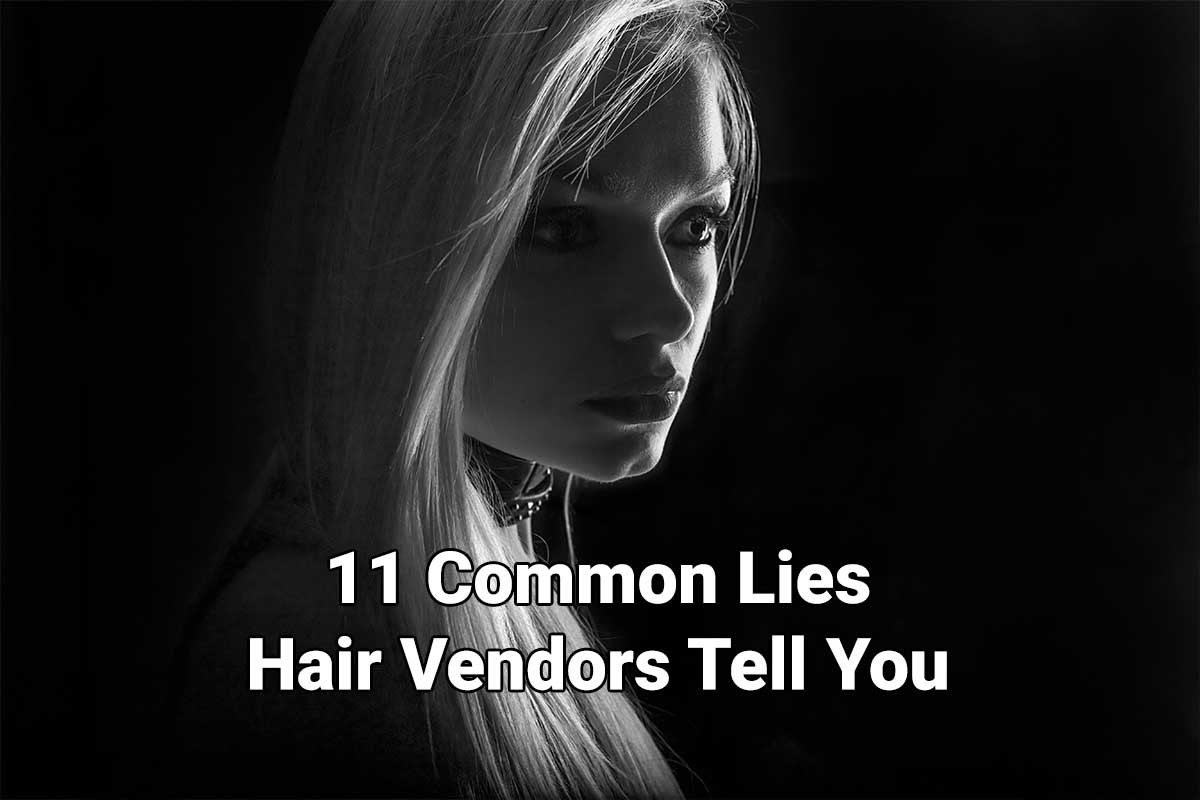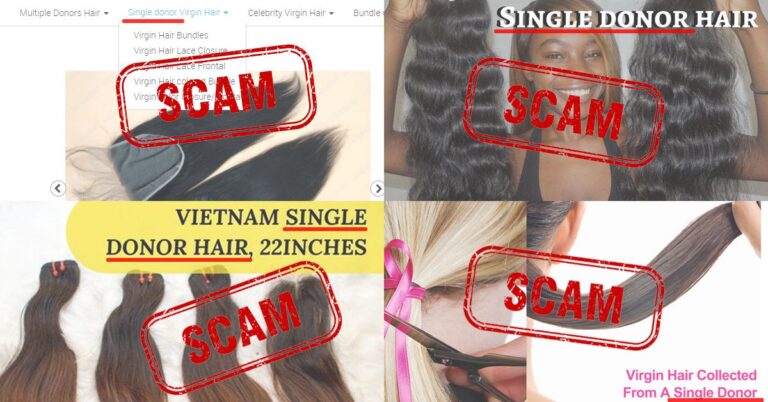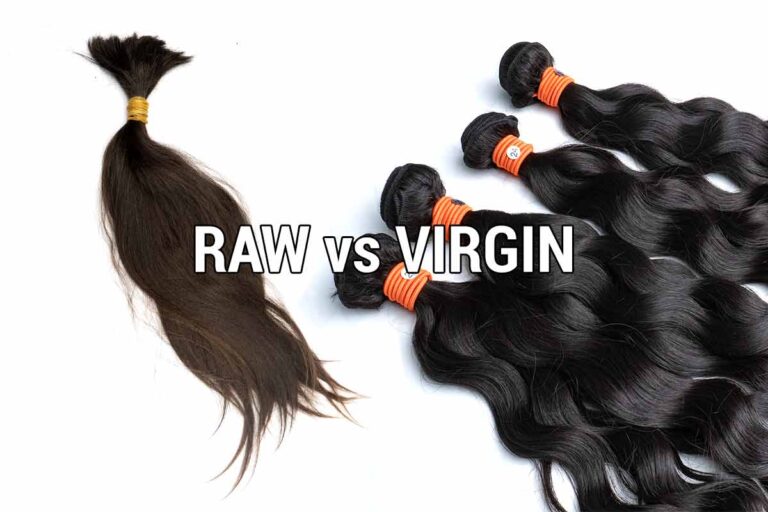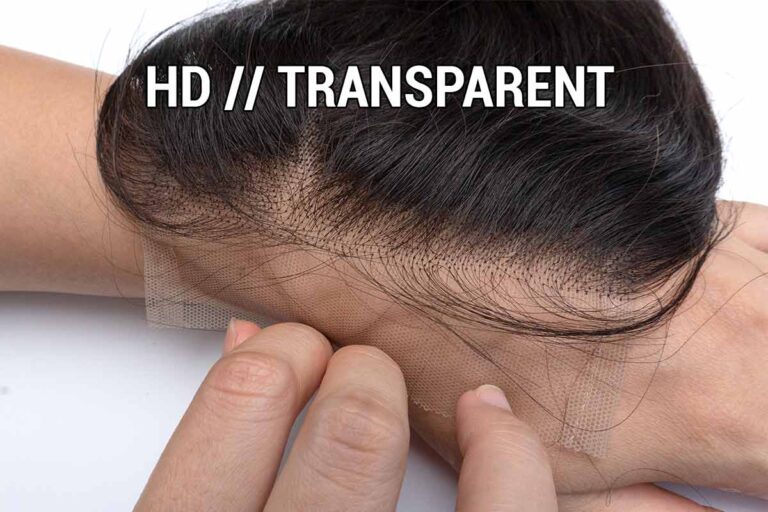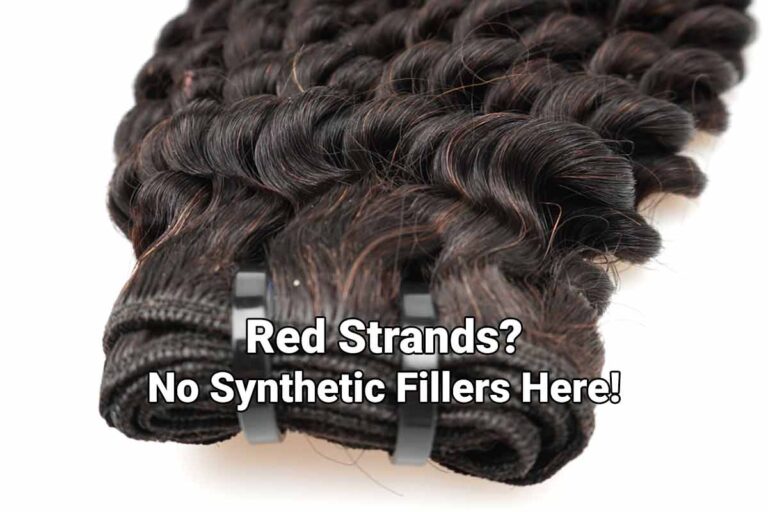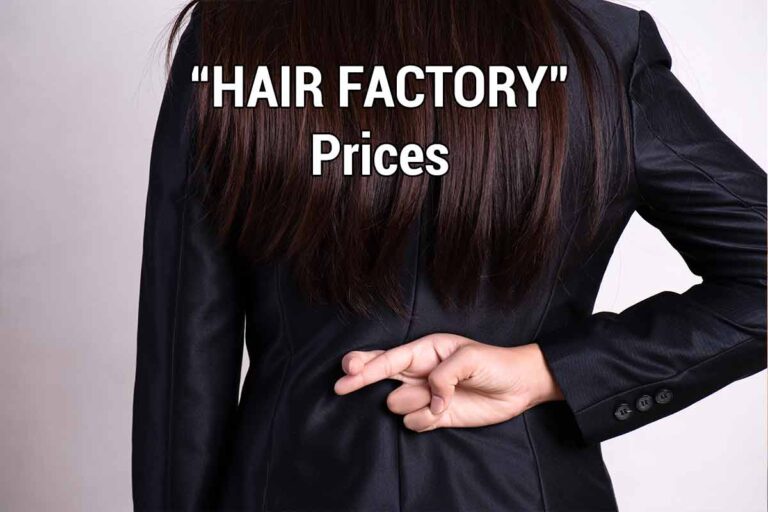11 Common Lies Hair Vendors Tell You – Don’t Get Scammed!
When buying hair extensions or wigs, knowing what to look for and whom to trust can be difficult. Unfortunately, there are some hair vendors out there who may not have your best interests at heart. These vendors may tell you common lies to make a sale or deceive you into buying a subpar product.
But don’t worry – we’ve got you covered. This article will expose 11 common lies that hair vendors might tell you. By knowing these lies, you’ll be better equipped to spot them and avoid falling for any scams. So, let’s dive in and take a closer look at what you need to watch out for when shopping for hair products.

Table of Contents
1. Origin of the Hair
Hair vendors sometimes misrepresent the origin of their hair, stating that it’s from a particular country or region when it’s sourced from elsewhere. It’s all marketing to sound more exotic.
The truth is that hair is obtained from wherever it’s available. High-quality hair material is scarce, and sourcing it from your own country is hard, even with a population of 1.3 billion. So, hair collectors tend to travel all over Asia to get hair. All of it could end up in the same bundle, and you wouldn’t be able to tell it is from different origins.
India, Indonesia, and the Philippines have a colonial past. They tend to have finer, naturally wavy hair. Most other Asian countries have similar hair textures.
Don’t expect Asian suppliers to offer hair from Brazil, Peru, Malaysia, or real Russian hair. Mostly China, India, and Vietnam won’t export their highest quality hair to other hair-producing countries despite having a Russian ethnic group. India does not export raw hair to China, and Chinese manufacturers tend to dislike Indian floor hair due to its thinness and inability to withstand bleaching and chemical processing. At least not as good as coarser Chinese hair can.
The quality of hair extensions is determined by the way the hair is sourced and turned into hair extensions. Each country and each manufacturer uses a slightly different production process, and differences can originate from that.
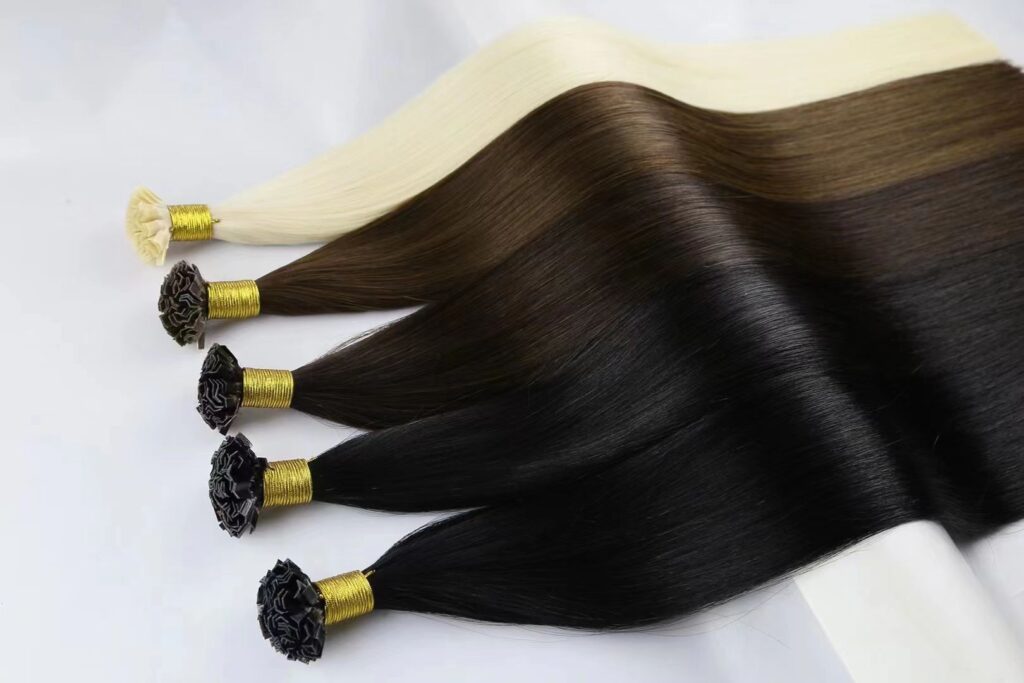
2. Overstating Hair Quality
Hair vendors often overstate the quality of their hair, asserting that it’s virgin hair that has never been chemically treated when it has actually undergone processing. The labels of raw, virgin, and remy hair have been so abused that they have lost their meaning.
So, it’s more appropriate to describe the hair in terms of how it was sourced (whether it was cut directly from a donor or obtained from the floor) and how it was processed. Floor hair that is aligned using a non-remy to remy machine is higher quality than hair with stripped cuticles from an acid bath.
3. Length of the Hair Products
The length of hair extensions or wigs is an important factor to consider when purchasing. However, it’s not uncommon for some vendors to misrepresent the length of their products to make a larger profit. They may advertise a certain length, but the actual length falls short of what was indicated. Sometimes, the price difference between two inches can be as much as $10, so these vendors have a significant incentive to lie about the length.
It’s worth noting that hair bundles are usually longer than their advertised length. For instance, if we buy 22″ bundles, they might measure 23.5 inches, with a few strands reaching 24 inches. While we trim the tips and package them to look fuller, other sellers may market them as 24″ without trimming the ends.
And wigs are another example. Hair vendors might promote a wig as having a 24-inch length with a 14-inch closure and 20, 22, and 24-inch bundles. This kind of deception is unfair and takes advantage of customers.

4. The Weight of the Hair Products
When it comes to purchasing hair bundles or wigs, it’s not just the length you need to be aware of but also the quantity of hair included. Unfortunately, some vendors engage in misleading practices and may claim that their product includes more hair than it actually does.
I used to work for a company with bundles weighing 90 grams, but they added 8 grams of rubber bands to increase the weight.
It’s important to remember that the weight of hair closures can vary between suppliers. For example, a 14″ closure from one supplier might weigh 10 grams less than one from another supplier. This means that even if one hair vendor is cheaper, you might receive 10% less hair in each purchase.
5. The Fullness Ratio of the Hair
We’ve been selling single-drawn hair for many years, and one important number is the percentage of the bundle that actually has full-length hair in single-drawn hair, usually around 15%.
However, in the hair industry, that 15% number is comparable to the men’s claim of 7-8 inches. Yes, we women have been lied to way too often. Do you measure the size from the base to the ends, or do you smuggle a little bit to make things look better than they really are?
The more you see, the more you will understand what 15% is really like.

6. Marketing Tactics and Fake Customer Reviews
Customers must be wary of marketing tactics and customer reviews when shopping for hair online. Most vendors may post fake customer reviews or only positive reviews on their website or social media pages, making it difficult for customers to make informed decisions.
And yes, we do it too. While our Instagram review page is full of genuine reviews, we still manually add reviews to the products on our e-commerce website. It’s good for SEO and leaves a more reliable first impression. The alternative is trying to get reviews from our retail clients, which is frustrating as our goal is mainly wholesale.
Unfortunately, this problem isn’t unique to hair vendors but is prevalent across various industries. Vendors often use Misleading marketing tactics to make their company appear more trustworthy and established than in reality. For instance, vendors may post pictures of random factories or offices or piles of FedEx packages to create an impression of high volume. However, many vendors are not registered companies, work from home, or operate from small offices.



7. Ethically Sourced Hair
Some vendors may claim that the hair is sourced ethically or sustainably, but in reality, it could come from questionable sources such as hair salons, prisons, or developing countries where hair donors may not be fully informed or compensated fairly.
Even if you look at India, part of their religion is that they will donate their hair at temples. Part of the earnings are used to build facilities for the poor. And that sounds nice, but what percentage of it goes towards some rich guy’s 13th car? That information will never be disclosed.
In China, it can be difficult to obtain hair, and offering more money can encourage girls to donate their hair, particularly in impoverished areas. The income they earn can significantly contribute to feeding their families and even support their education. However, these girls often have limited knowledge about the true value of their hair, while others in the supply chain profit immensely from it.
It’s easy to go to a poor place, film a video, and show how much the girls are paid for their hair. But what happens when the camera is turned off? The truth is, without constant oversight, there’s no guarantee that everything is done ethically.
Unfortunately, many hair manufacturers often get their supply from collectors without knowing where the hair truly comes from. This makes it even harder for hair vendors to ensure that the hair has been obtained ethically or not.

8. Single-donor hair
Single-donor hair is supposed to be hair that comes from one person, usually a healthy individual with no history of chemical processing or hair damage. This hair type is often marketed as being of higher quality in the hair extension industry.
However, the average ponytail weighs between 30 and 80 grams, making creating 95-100-gram bundles from a single donor difficult. Obviously, an 80-gram ponytail doesn’t get thrown away, nor sold as a multi-donor bundle.
It’s just mixed and matched, and it’s not going to matter for the quality.
Furthermore, hair bundles are manufactured to have a consistent short-to-long hair ratio. This means that xx% of the hair is long-length, yy% medium-length, and zz% short-length. The only way to consistently produce this is by using hair from a handful of donors.
So, if your vendor tells you they have single-donor hair, take things with a grain of salt.
9. The longevity of the hair
Hair vendors make bold claims about the durability of their products, but the reality is that these extensions or wigs may only last a few weeks or months before becoming unusable. Vendors typically cannot estimate hair extensions’ lifespan accurately since they do not wear them personally and rely solely on customer feedback. As a result, the estimations may be overly optimistic, as vendors base their claims on what other vendors say about their products. Customers with negative experiences are also more likely to speak out, while those with positive experiences may not provide feedback for years.
10. Offering affordable raw hair
Raw hair is sourced directly from donors and is a limited resource. This means that a finite amount of raw hair is available on the market, increasing its price. It’s highly sought after by hair extension manufacturers, hair stylists, and individuals looking for high-quality hair extensions. If affordable, demand will be way higher than the available supply, and the seller will be out of business in no time.
Even if Indonesia sells high-quality raw hair at very low prices, it means China, India, and Vietnam would buy all of it and sell it with a very high profit margin. That’s simply how things work.
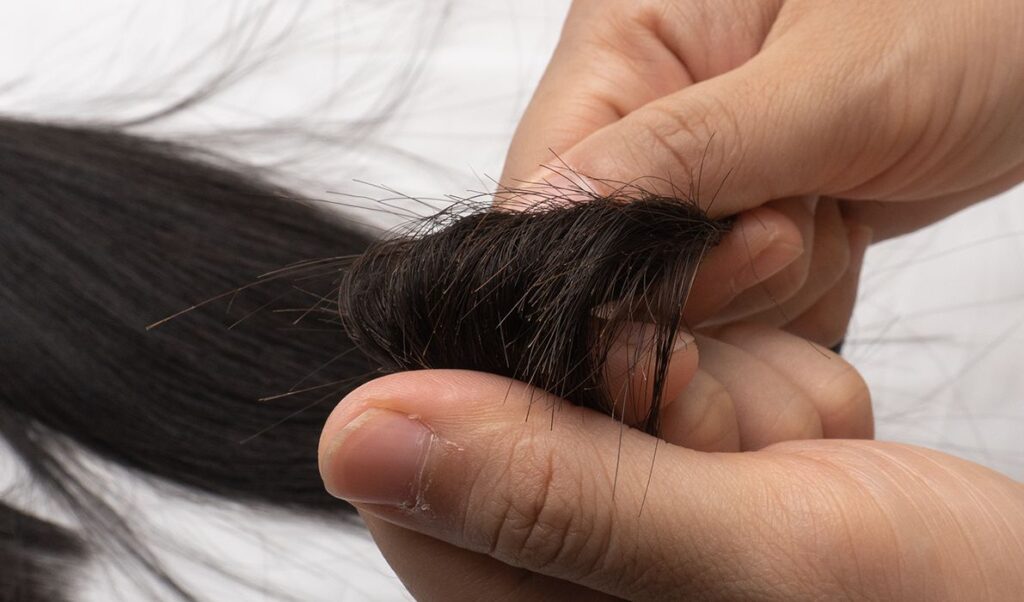
11. Claiming to be a hair factory
Some hair vendors falsely claim to be hair factories to create the impression that they are large and trustworthy companies with established manufacturing processes. This can increase customer trust and lead to more sales. While some people may assume that hair factories are cheaper than hair vendors as they bypass the middleman, the actual cost of hair extensions is influenced by marketing and branding expenses. Vendors must invest in marketing and branding to make their products visible to customers. Moreover, genuine manufacturers are hard to find and may not even be officially registered as companies to avoid taxes, making exporting hair extensions challenging.
In conclusion, there are many lies that hair vendors may tell you when you’re shopping for hair extensions or wigs. From misrepresenting the origin of the hair to overestimating its quality or length, these vendors may use various tactics to deceive customers into buying subpar products. It’s essential to be aware of these common lies and to know what to look for when shopping for hair products.
Customers can make informed decisions and avoid being scammed by being informed about their hair’s quantity, weight, and color and the marketing tactics vendors use. Finally, it’s important to remember that the hair industry is not always transparent, and it can be challenging to determine the source or quality of the hair material. However, by staying vigilant and researching, you can find reliable vendors and high-quality hair products that meet your needs.
Thank you for taking the time to read this article. If you have any questions or want to learn more about the topic, please don’t hesitate to contact me at +86 135 3369 3283 (WhatsApp/iMessage). And if you found this information helpful, please share it with your friends and family on Facebook. Together, we can spread knowledge and empower others to make informed decisions.
Frequently Asked Questions
Why is it hard to tell if hair was sourced ethically or not?
One primary concern in the hair industry is the lack of transparency from manufacturers regarding sourcing their hair materials. Manufacturers often use multiple sources to meet the high demand; unfortunately, some of these sources are unethical. Consequently, it can be challenging for consumers to determine whether their hair has been obtained ethically or not. Even in cases where donors are paid inadequate amounts for their hair, these payments can still significantly impact their quality of life.
What are some common lies that hair vendors tell customers?
Hair vendors often lie to make sales or deceive customers into buying subpar products. Some common lies that hair vendors tell include misrepresenting the origin of the hair, overstating hair quality, misrepresenting the length and weight of hair products, misrepresenting the color of the hair, posting fake customer reviews or misleading marketing tactics, claiming hair is ethically sourced, claiming hair is single-donor hair, and making unrealistic claims about the longevity of the hair.
Can you provide some tips on how to spot a trustworthy hair vendor?
There are a few things to look out for to find a trustworthy hair vendor:
1. Check if the vendor has a website or social media presence, which can indicate professionalism and credibility.
2. read customer reviews and seek feedback on the hair quality, customer service, and delivery times.
3. Ask the vendor questions about the hair’s origin, quality, and processing. It’s a good sign that they are a reputable vendor if they are knowledgeable and transparent.
4. Check if they offer a return policy and what it entails.
5. Be cautious of vendors who use misleading marketing tactics or make unrealistic claims about their products. You can avoid falling victim to a hair vendor scam by researching and asking the right questions.
Do hair vendors deceive or lack knowledge about hair extensions?
It’s challenging to make a sweeping generalization about all hair vendors, as the quality of products and level of honesty can vary significantly among different companies and individuals. However, it is possible that some hair vendors may lack knowledge or experience about the products they are selling or may have difficulty communicating due to language barriers.
Additionally, some hair vendors may intentionally misrepresent their products by using misleading marketing language or by selling low-quality hair extensions and claiming they are of a higher grade. Sometimes, this may be due to a lack of integrity or an attempt to make a quick profit.
To ensure that you purchase high-quality hair extensions from a reputable vendor, it’s important to research, read customer reviews, and ask questions about the products and the company’s policies. If a vendor cannot provide clear and transparent information about their products, it may be best to look for a different supplier.
